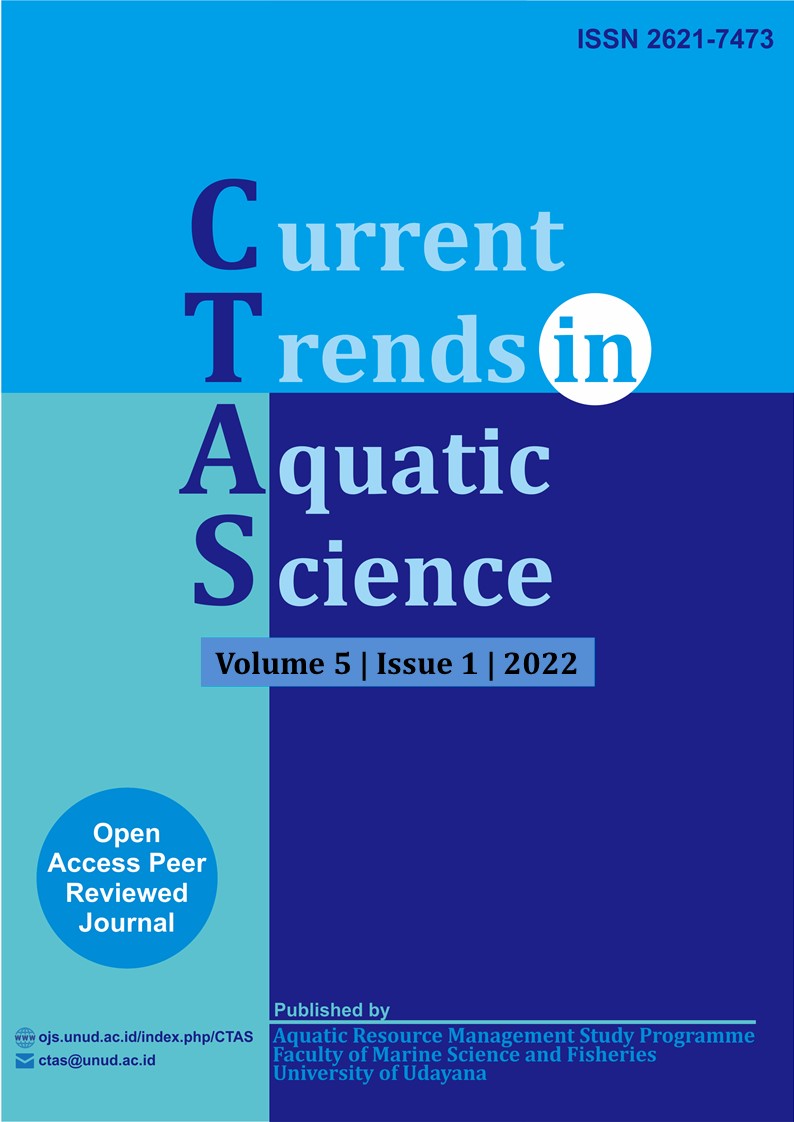Keanekaragaman dan Asosiasi Antarspesies Lamun di Perairan Pantai Samuh, Nusa Dua, Bali
Abstract
Seagrass are flowering plants which have rhizomes, leaves and true roots. Most types of seagrass in Indonesia are found in Bali. One of the distributions of seagrass in Bali is Samuh Beach. This study aimed to determine the diversity of seagrass and association patterns between seagrass in Samuh Beach. This research conducted on January-February 2021. There were three observation stations, namely station I (fishing boat landing sites), station II (tourist activities), and station III (hotel area locations). The method used in this research was descriptive method Observation of seagrass samples using a 50×50 cm quadratic transect. Data analysis was carried out by calculating density, cover percentage, diversity index, uniformity index, dominance index, and associations between seagrass species. There were eight types of seagrass in Samuh Beach (Enhalus acoroides, Cymodocea rotundata, Cymodocea serrulata, Halodule pinifolia, Halodule uninervis, Halophila ovalis, Syringodium isoetifolium, and Thalassodendron ciliatum). The diversity of seagrass in Samuh Beach from observations at stations I and II in balanced conditions with a value of 1.42 and 1.52. Station III was a low category (0.79). There were 14 association pairs species of seagrass in Samuh Beach. The 12 association pairs were not related and 2 association pairs were related at the 5% level, (3.48, ?2 count> ?2 table). The related association pairs have positive association types, namely Syringodium isoetifolium with Halophila ovalis and negative associations, and Syringodium isoetifolium with Halodule pinifolia.


